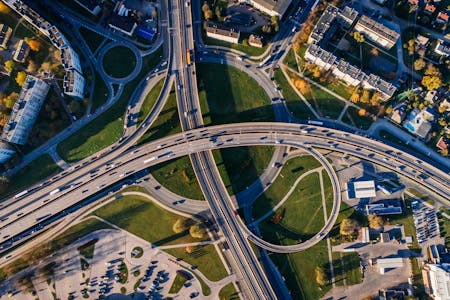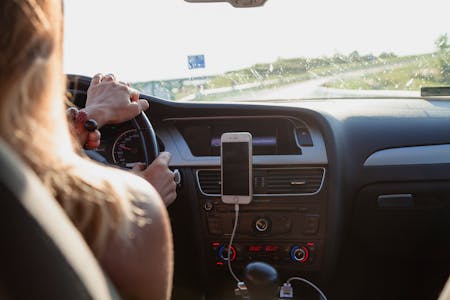

Safety on the roads is a shared responsibility. Witnessing reckless driving can be alarming, and knowing how to report it is crucial for community well-being.
This guide aims to empower you with the knowledge to take appropriate action, enhancing safety for all.
Stats About Speeding in the US
| Statistic | Detail |
|---|---|
| Percentage of Traffic Fatalities Involving Speeding (2021) | 29% |
| Number of Deaths Due to Speeding (2021) | 12,330 |
| Total Fatal Crashes Attributed to Speeding (2021) | 11,057 |
| Percentage Increase in Speeding-related Deaths from 2020 to 2021 | 7.9% |
| Most Likely Age Group to Speed at Time of Fatal Crash | 15-24 years |
| Effect of Roadway Surface Conditions on Speeding-related Fatal Crashes | Increases with worse conditions (e.g., snow, ice, water) |
| Alcohol Impairment in Speeding Drivers Under 21 (Fatal Crashes) | 24% |
| Alcohol Impairment in Speeding Drivers Aged 21-54 (Fatal Crashes) | 40% or more |
What Constitutes Reckless Driving?
Understanding what falls under reckless driving is crucial for identifying it on the roads.
Reckless driving is a serious offense characterized by a disregard for the rules of the road and the safety of others. It encompasses a range of dangerous behaviors that pose a significant risk to public safety.
Identifying Reckless Driving Behaviors
Reckless driving is a dangerous behavior that poses a significant threat to public safety. It involves a variety of actions that show a blatant disregard for traffic laws and the well-being of other road users.
Understanding these behaviors can help individuals recognize and report reckless driving, contributing to safer roads for everyone.
- Speeding Significantly Over the Limit
- Aggressive Lane Changes Without Signaling
- Running Red Lights
- Driving Under the Influence
- Tailgating
Identifying these behaviors is the first step in taking action against reckless driving. By being vigilant and reporting such actions, individuals play a crucial role in enhancing road safety and preventing accidents.
Differences Between Reckless and Aggressive Driving
While similar, reckless and aggressive driving are distinct.
Aggressive driving typically involves a combination of unsafe behaviors driven by hostility or impatience, whereas reckless driving is characterized by a single, dangerous act without regard for safety.
The Importance of Reporting Reckless Driving
Reporting reckless driving is more than a civic duty—it’s a critical action that can lead to safer roads and save lives. Understanding the impact of reckless driving and the positive effect that reporting can have is essential.
By being proactive, you contribute to a culture of safety and responsibility on the roads.
How Reporting Contributes to Safer Roads
When you report reckless driving, you’re directly contributing to road safety. Law enforcement agencies rely on these reports to identify and mitigate risks on the roads.
Each report is a step towards preventing potential accidents and making the roads safer for everyone. It’s a collective effort—your vigilance and willingness to report can make a significant difference.
The Societal Impact of Unreported Reckless Driving Incidents
Unreported reckless driving incidents pose a silent threat to communities.
Without reports, law enforcement can’t take the necessary actions to address these dangers. This lack of information can lead to more accidents and injuries, affecting the well-being of entire communities.
It underscores the importance of not only being aware but also taking action by reporting.
How to Report Reckless Driving
Identifying and reporting reckless driving is a crucial part of ensuring road safety. There are various methods to report these incidents, each appropriate for different situations.
By understanding how to report effectively, you can help law enforcement address these issues promptly.
When to Call 911
Calling 911 should be reserved for instances where reckless driving poses an immediate danger to the public. This includes situations like a driver swerving dangerously across lanes or engaging in high-speed chases.
It’s crucial to provide clear and concise information to the dispatcher, including the location, description of the vehicle, and nature of the driving behavior.
Remember, making this call should always be done safely.
Using Non-Emergency Numbers
For cases where reckless driving is observed but doesn’t immediately endanger others, non-emergency numbers are the appropriate channel.
These numbers connect you to local law enforcement agencies where you can report the incident without tying up emergency resources.
Knowing your local non-emergency number and having it readily available can be incredibly useful.
Online Reporting Tools and Apps
Many jurisdictions now offer online platforms and mobile apps for reporting reckless driving. These tools provide a convenient way to report non-urgent cases directly to the authorities.
When using these tools, be as detailed as possible, providing specifics about the vehicle, location, and behavior observed.
It’s a modern approach to an age-old problem, leveraging technology to enhance community safety.
After Reporting Reckless Driving: What Happens Next?
After taking the step to report reckless driving, you might wonder about the outcomes of your report.
Understanding the process that follows your report can provide insight into how these issues are addressed by law enforcement and what impact your action may have.
Police Response and Investigation Process
Upon receiving a report of reckless driving, law enforcement agencies prioritize the information based on the immediacy and severity of the threat.
For urgent situations, officers are dispatched to the scene with the goal of intercepting the reckless driver.
For reports made through non-emergency channels or online tools, the information is logged and may initiate a follow-up investigation. This process ensures that each report is addressed appropriately, based on the level of risk it presents.
The Role of Evidence in Follow-Up Actions
Evidence plays a crucial role in the follow-up actions taken by law enforcement.
If you’re able to provide details such as the license plate number, vehicle description, and specific behaviors observed, it significantly aids in the investigation. In some cases, dashcam footage or eyewitness accounts can be invaluable.
However, it’s important to prioritize safety and legality when gathering any form of evidence.
Potential Outcomes and Legal Proceedings
The outcomes of reporting reckless driving can vary.
In instances where the driver is intercepted, they may face fines, license suspension, or even arrest, depending on the severity of the offense.
For reports that lead to investigations, the outcomes can include warnings, traffic citations, or more serious legal actions if warranted.
It’s important to remember that while not all reports result in immediate visible action, they contribute to broader efforts to deter reckless driving.
Protecting Yourself While Reporting
Reporting reckless driving is a commendable action, but it’s equally important to ensure your own safety during the process. Here are ways to protect yourself and legal protections available for reporters of reckless behavior on the roads.
Safety Tips for Observing and Reporting
When observing and reporting reckless driving, it’s crucial to prioritize your safety and the safety of others. Following these steps can ensure that you provide valuable information to law enforcement while minimizing any risk to yourself.
- Stay at a Safe Distance
- Pull Over Before Reporting
- Use Hands-Free Devices
- Gather Detailed Information
- Do Not Engage
Following these guidelines can help you contribute to road safety efforts effectively and responsibly.
Reporting reckless driving is a vital action, but it should never compromise your safety or that of other road users.
Your vigilance and willingness to report can make a significant difference in preventing accidents and promoting a safer driving environment for everyone.
Legal Protections for Reporters of Reckless Driving
Individuals reporting reckless driving are protected under various state laws, ensuring that their actions can’t be used against them negatively.
These protections encourage community members to report dangerous behaviors without fear of reprisal.
It’s part of a broader effort to promote public safety and hold reckless drivers accountable for their actions.
Avoiding Confrontation with Reckless Drivers
It’s crucial to avoid any form of confrontation with a reckless driver.
Engaging with the driver could lead to unpredictable and potentially dangerous situations. Your role is to report the behavior to the authorities, not to intervene directly.
Law enforcement professionals are trained to handle these situations and are the best-equipped to take appropriate action.
Ready to Take Action? Contact Goldenzweig Law
If you or someone you know has been affected by a reckless driving incident, Goldenzweig Law is here to help.
As your dedicated car accident lawyer, we’re committed to ensuring you receive the justice and compensation you deserve.
Call us today at 713-903-3988 to discuss your case and explore your options.
Together, we can make a difference in promoting road safety and holding reckless drivers accountable.
Navigation
Related Posts


What is a Non Dot Recordable Accident?
Continue Reading

